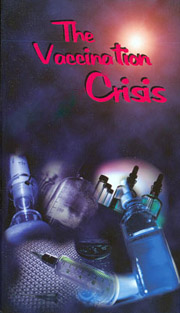THE 1960sNixon was absent. President Eisenhower was briefed on Fort Detrick’s advances just before he left the White House. The full meeting of the National Security Council occurred on February 18, 1960. But Richard Nixon, the vice president, was absent. He was preparing for his run for president. By this time, researchers had found ways to concentrate the diseases and extend their storage lives from one to three years. Under Kennedy. Spending on biological weapons greatly increased after John F. Kennedy took office in January 1961. The new secretary of defense, Robert McNamara, along with the Joint Chiefs of Staff thoroughly analyzed the program and were satisfied that the new weapons would prove very handy in case of war, especially those (such as Q fever) which could cripple the enemy’s troops rather than kill them. Caring for injured soldiers would cause more problems than disposing of dead ones. The development of virus weapons was accelerated (Regis, Biology of Doom, pp. 185-186). Tests were made in both the Pacific and Alaska. The hundreds of personnel involved in these tests were coordinated from Fort Douglas, near Salt Lake City. Improving smallpox. As we became more involved in the Vietnam War, work focused on improving smallpox and its delivery. This ancient disease was highly contagious, and killed about a third of its victims, mainly from blood loss, cardiovascular collapse, and secondary infections as pustules spread over the body (New York Times, June 15, 1999). It was during this time that biologists at Fort Detrick learned how to extend the life of the variola (smallpox) virus by refrigerating it in a special way which made use of freeze drying. In connection with this, an ominous discovery was made: Freeze drying would kill some microbes, but not smallpox (Hahon, Screening Studies, pp. 15, 55). This meant they could be stored for an indefinite period of time. Methods were devised for making it into a fine powder and spraying it. Another fake test. In May 1965, Fort Detrick scientists packed fake smallpox powder in suitcases and sprayed it in Washington National (now Reagan International) Airport, just across the Potomac from the Capital. The resultant report concluded that one in every twelve travelers would have become infected, quickly spreading the disease throughout the nation; and that smallpox powder would be an excellent choice for terrorism against a foreign power. A special warfare advantage is that its incubation period is a full twelve days before the first symptoms (malaise, headache, fever, and vomiting) begin to occur and medical diagnosis is made. Our military leaders considered applying smallpox to the Ho Chi Minh Trail in Vietnam. But the anger caused by a fearful spread of the disease throughout southern Asia, and the quick retaliation likely to come from Chinese and Soviet stockpiles, were feared. So the project was abandoned. Protests begin. Nearly all of the information you have just read was not generally known back then (nor is much of it known today). Nevertheless, by the late 1960s, the American public had gradually become aware that biological weapons were being made at Fort Detrick. Crowds of Vietnam antiwar protesters gathered at its entrance. Books opposed to germ warfare began being published (Susan Wright, ed., Preventing a Biological Arms Race; S.M. Hersh, America’s Hidden Arsenal; etc.). Nixon calls an end. Then, on November 25, 1969, Richard Nixon announced the end of biological weapon testing. In January, Nixon also stopped all our chemical weapons programs. The scientists were told to focus their work on “germ defense,” not germ attack. But no limits were set on the quantities of dangerous microbes or chemicals which could be used in that research. So our stockpiles were not reduced. Overseas: business as usual. But our biological / chemical defense program had been greatly damaged. Our scientists were well-aware of the fact that it takes 18 months to develop a weapons-grade agent and ten years to develop a good vaccine against it. They also knew that the Soviet Union would not stop their deadly projects, just because we had. By that time, China was also working on chemical and biological weaponization projects. Soon after, certain Near Eastern nations would begin doing the same. |

